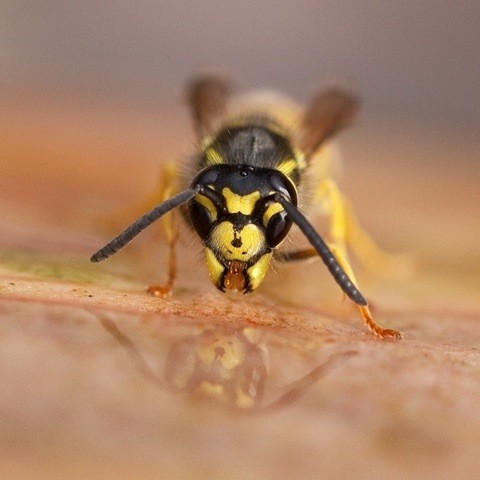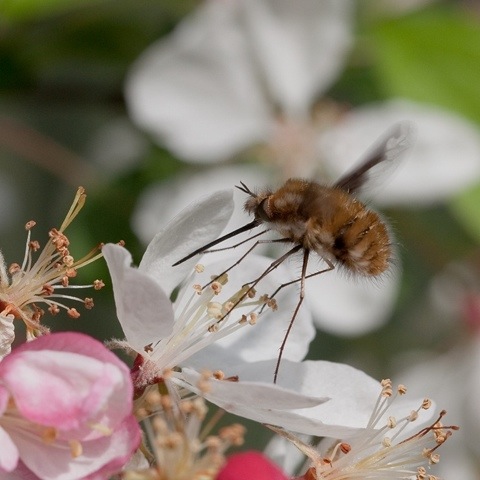
There are many different types of wasp in the UK. The one we all know is the common wasp (above), the ruin of many a barbecue in summer and autumn. I call this shot, “Mirror, mirror on the wall”.

Common wasps are social wasps, living in colonies. There are also many different types of solitary wasp, that dig burrows and, very often, have a parasitic life-cycle, such as the wasp in the next picture.

Your eyes are not deceiving you; this wasp is indeed pulling the legs off a spider! It is a type of spider wasp of the family pompilidae. (Identification for an amateur is not straightforward but I think this is probably pompilus cinereus.) They find a spider, paralyse it with their sting, and drag it back to their burrow. Then they lay an egg inside the spider. Once the egg hatches, the larva eats the spider alive, from the inside out. Sometimes, if the spider is too big for the burrow, the wasp will pull its legs off. The expression, “feeling waspish”, takes on new significance!
Some wasps have an elegance about them, like the slim-waisted society belle below. Hence the expression, “waspish figure”.

I think this is probably a type of digger wasp. This one has a damaged wing, which is why it stuck around long enough for me to get a shot off. Do not be fooled, however, by its stylish gown and slender grace. If my identification is correct, this beguiling debutante is parasitic too; the female lays its eggs in flies. Waspish in appearance and intent.



















